A river is a ribbon-shaped stream of water that flows downhill due to gravity's influence. A river might be vast and deep, or it can be shallow enough to wade across. A stream, creek, or brook is a smaller flowing body of water than a river. Some rivers run all year, while others flow during certain seasons or particularly heavy rain. Thousands of miles of river can be found in the world's major rivers. Rivers' erosional force can create geologic marvels like the Grand Canyon.
Every river has a point where the water begins to flow. A headwater is a name for this type of source. Rainfall or snowfall in the mountains can provide the headwater source, but it can also emerge from the earth or form at the border of a lake or large pond. A river's mouth is where the water drains into a larger body of water like a lake or the ocean. Rivers may pass through wetlands along the course, where plants filter pollutants out of the water.
River water is fresh, which means it has less than 1% salt content. Scientists estimate that the world's rivers transport around 3.6 billion metric tonnes (four billion tonnes) of salt from land to sea each year. On the other hand, Rivers continue to transport and distribute vital minerals and nutrients required for plant and animal life to thrive. As a result, rivers are home to some of the world's most biodiverse ecosystems.
Rivers can also generate an estuary formed when salty seawater meets with freshwater near the river mouth to create "brackish water." The Hudson River in New York, the United States, is an example of an estuary with brackish water that stretches more than 241 kilometers (150 miles) upstream.
Rivers that overflow their bank's deposit silt in the flood plains surrounding them. Fast-flowing rivers transport Pebbles, sand, and silt. As the river widens, these sediments sink and stack up to produce deltas as the river slows down?as in a marsh, on the outside of a curve, or at the mouth. These deltas and floodplains are exceptionally fruitful agricultural zones with enormous economic importance for nearby people. The Nile River and its delta, for example, were instrumental in the formation of the Egyptian empire that built the pyramids.
Humans use rivers for various purposes, including irrigation, drinking water, transportation, energy generation via hydroelectric dams, and recreational activities such as swimming and boating. Each of these uses can negatively impact a river's health and its ecosystems. Limnologists, or water scientists, are responsible for monitoring the health of rivers, lakes, and streams.
Animals
Freshwater animals and plants can be found in abundance in rivers, lakes, and streams. Hundreds of different species can coexist in a single aquatic ecosystem, and freshwater ecosystems can be found worldwide.
Food webs and food chains are conceptually similar, but food webs better reflect the numerous interactions in an ecosystem. Instead of following a single energy pathway, a food web depicts all of the food chains within an ecosystem and hence all of the numerous species interactions. The river otter, for example, might be included first, followed by the snake, fish, frog, and insect in a food chain detailing freshwater creatures and plants.
Rivers are freshwater environments home to more than 100,000 plants and animals. The Mississippi River alone boasts around 120 fish species in its waters in the United States. On the other hand, Rivers are home to more than just fish. There are numerous additional species, including those that have developed unique underwater survival techniques.
The study of the river's journey necessitates compiling a list of the world's top 10 longest rivers and their lengths and routes. Understanding the river's route might also help you comprehend the area's demography.
| River | Length in km |
|---|---|
| Nile River | 6650 Km |
| The Amazon River | 6575 Km |
| Yangtze River | 6300 Km |
| Mississippi River | 6275 Km |
| Yenisei River | 5539 Km |
| Yellow River | 5464 Km |
| Ob-Irtysh River | 5410 Km |
| Parana River | 4880 Km |
| Congo River | 4700 Km |
| Amur River | 4480 Km |
1. Nile River (6650 km)
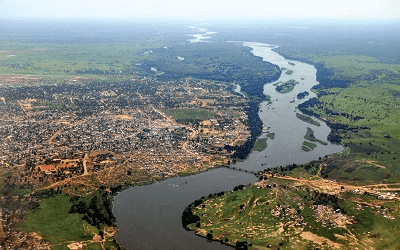
The Nile River is known as the world's longest river. The Nile River stretches for roughly 6650 kilometers. The river's source is thought to be Lake Victoria. Egypt, Uganda, Ethiopia, Kenya, Tanzania, Rwanda, the Democratic Republic of the Congo, Eritrea, Burundi, Sudan, and South Sudan are all located along the river. The river's two tributaries are the Blue and White Niles. Although most of us think of the Nile River as the world's longest river, other experts believe the Amazon River is the genuine victor. Large rivers, such as the Nile and the Amazon, have a plethora of sources and a plethora of large and tiny tributaries.
The Victoria Nile emerges from Lake Victoria at Ripon Falls near Jinja, Uganda. It flows about 130 kilometers north of Lake Kyoga. The last 200 kilometers of the river segment begins on the lake's western banks and runs west until just south of Masindi Port, where it turns north, then makes a large half circle to the east and north until it reaches Karuma Falls. It continues westerly via the Murchison Falls for the remainder of its journey until it reaches the far northern beaches of Lake Albert, where it forms a large river delta.
2. Amazon River (6575 km)
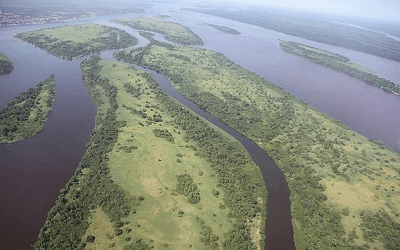
In terms of water flow volume, the Amazon River is, without a doubt, the world's largest river. However, its claim to being the world's second-longest river is widely contested, as Egypt's Nile River has long held the title. The source of the disagreement is the debate over Amazon's origins. According to a study published in 2014, Amazon started in the Cordillera Rumi Cruz. The Amazon accounts for 20% of worldwide riverine flow into the oceans. The Amazon River has an average discharge of around 209,000 m3/s, or approximately 6,591 km3 (1,581 cu mi) per year, larger than the total discharge of the next seven greatest independent rivers. Two of the top 10 rivers in terms of discharge are Amazon tributaries. With approximately 7,000,000 km2, the Amazon basin is the world's largest drainage basin. The river's drainage basin in Brazil alone is larger than that of any other river. Although the Amazon only has one-fifth of the flow, it eventually empties into the Atlantic Ocean when it enters Brazil; it already has a bigger flow than any other river at this stage.
3. Yangtze River (6300 km)
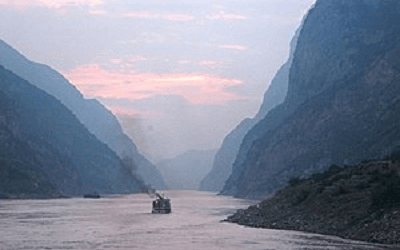
The Yangtze River is the third-longest river globally and the world's longest river that runs entirely within a single country. It is also the longest river in Asia. The Yangtze River basin is home to one-third of the population of China, the world's most populated country. The Chinese government has historically identified the Tuotuo tributary in the Tanggula Mountains as the river's source. The Yangtze River, which drains into the East China Sea at Shanghai, is formed by these and other tributaries. The Yangtze River's source, according to new information, is on Jari Hill, where the Dam Qu tributary's headwaters arise.
4. Mississippi River (6275 km)
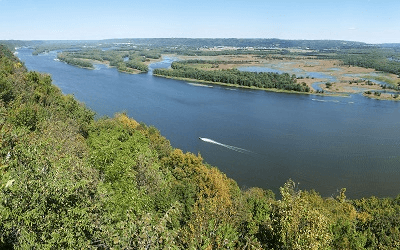
The Mississippi, Missouri, and Jefferson rivers comprise the fourth-longest river system in the world. The river system drains 31 US states as well as two Canadian provinces. The Mississippi River is supposed to have its beginning in northern Minnesota's Lake Itasca and subsequently flows into the Gulf of Mexico. The Mississippi-Missouri-Jefferson river system was formed when the Jefferson River was considered the Mississippi River's farthest source. It flows south for 2,340 miles (3,770 kilometers) from its historic source of Lake Itasca in northern Minnesota to the Mississippi River Delta in the Gulf of Mexico. Thanks to its numerous tributaries, the Mississippi's watershed drains all or portions of 32 US states and two Canadian provinces between the Rocky and Appalachian mountains. The Mississippi River is divided into three sections: the Upper Mississippi, which runs from its headwaters to the Missouri River's confluence; the Middle Mississippi, which runs from Missouri to the Ohio River; and the Lower Mississippi, which runs from Ohio to the Gulf of Mexico.
5. Yenisei River (5539 km)
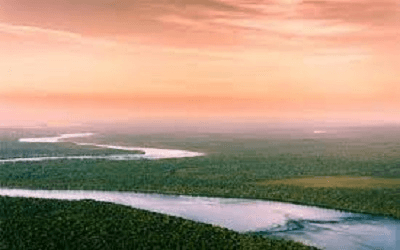
This is the world's fifth-longest river system and the Arctic Ocean's largest. The Selenge River is the river system's headwaters. The Selenge River has a length of 992 km and empties into Lake Baikal. The Angara River begins near Listvyanka in Lake Baikal and flows through Russia's Irkutsk Oblast until entering the Yenisei River near Strelka. Eventually, the Yenisei empties into the Arctic Ocean. The total distance traveled was 5,539 km.
The Yenisey valley is home to a diverse range of flora and wildlife, including Siberian pine and Siberian larch trees. There are 55 native fish species in the Yenisey basin (excluding Lake Baikal and the Khantayka headwaters).
During World War II, Nazi Germany and the Japanese Empire agreed to split Asia along a line that ran from the Yenisey to the Chinese border, then along the Chinese-Soviet Union boundary. According to studies, the Yenisey has been contaminated by radioactive discharges from a factory that manufactured bomb-grade plutonium in the secret city of Krasnoyarsk-26, now known as Zheleznogorsk.
6. Yellow River (5464 km)
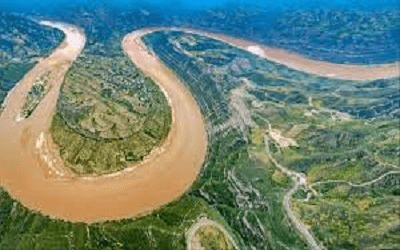
This huge river, also known as the Huang He, is named by the color of the water, which is caused by massive amounts of loose debris. Its basin is considered the birthplace of ancient Chinese civilization, and it has enormous symbolic and practical value for the country. The Yellow River basin stretches roughly 1,900 km (1,180 miles) east-to the west and about 1,100 km (1,100 miles) north-to the south (680 mi). It covers an area of around 795,000 square km in total (307,000 sq. mi). The constant elevation of the river bed, sometimes above the level of its surrounding farm fields, causes numerous destructive floods and course shifts.
7. Ob-Irtysh River (5410 km)
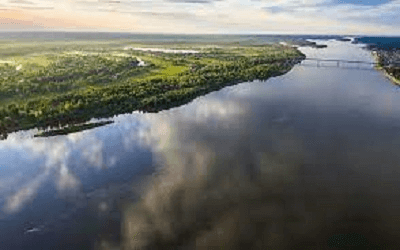
Together with the Yenisei and the Lena, the Ob-Irtysh, sometimes known as the Ob River, is one of the three great Siberian rivers. It runs into the Arctic Ocean from the Altas Mountains. It is formed by meeting the Biya and Katun rivers, both of which originate in the Altai Mountains. It is the westernmost of the three major rivers that flow into the Arctic Ocean in Siberia (the other two being the Yenisei and the Lena). It flows north-westward, then northward, before repeating these directions over a longer distance. Novosibirsk, the largest city in Siberia and Russia's third-largest metropolis, is located on its banks. The river is crossed here by the Trans-Siberian Railway.
8. Parana River (4880 km)
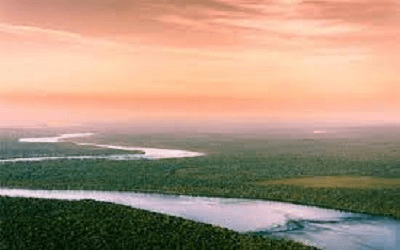
The Parana River, which flows through South America, is one of the world's longest and second-largest rivers. Its name comes from the Tupi term para rehe onáva, "like the sea." The Rio Paraná, along with its tributaries, comprises a huge drainage basin that spans all of South America's southcentral region, encompassing all of Paraguay, much of southern Brazil, northern Argentina, and the southeastern section of Bolivia. In southern Brazil, the course is formed by the confluence of the Paranaiba and the Rio Grande rivers. The river travels 619 kilometers (385 miles) southwest from the junction until reaching Saltos del Guaira, Paraguay.
9. Congo River (4700 km)
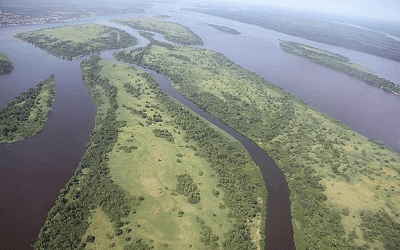
The Congo River, originally known as the Zaire River, travels across Africa's continent in a curving path and is the only river to cross the equator twice. It's also the world's deepest river, reaching depths of nearly 700 feet in some spots. The Congo-Lualaba-Chambeshi River System is the world's ninth longest river, with 4,700 kilometers (2,920 mi). It's also the world's deepest river, above 220 meters (720 ft). The Chambeshi is a tributary of the Lualaba River, the name of the 1,800-kilometer-long Congo River upstream of Boyoma Falls.
The Congo's origins are found in the East African Rift's highlands and mountains and Lake Tanganyika and Lake Mweru, which feed the Lualaba River, which eventually flows into the Congo below Boyoma Falls. The Chambeshi River in Zambia is commonly regarded as the Congo's source, as with the Nile River. From Kisangani, just below the Boyoma Falls, the Congo flows northwest, then gradually bends southwest, passing through Mbandaka, joining the Ubangi River, and eventually flowing into the Pool Malebo.
10. Amur River (4480 km)
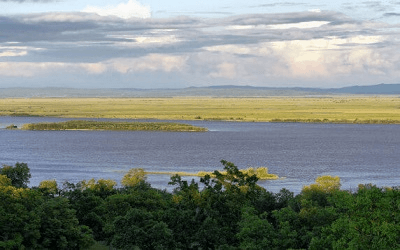
The Amur River, also known as the Heilong Jiang, is the tenth longest river globally, running along the border between China and Russia in northeastern China. Heilong Jiang means "black dragon river" in Chinese, but Amur is thought to be derived from the phrase "water." The Kaluga is the largest fish species in the Amur, reaching lengths of up to 5.6 meters (18 ft). Northern snakehead, Amur pike, taimen, Amur catfish, predatory carp, and yellow cheek are among the large predatory fish found in the river basin, as are the northernmost populations of the Amur softshell turtle and Indian lotus.
The Amur is thought to be home to at least 123 species of fish from 23 different families. The Gobioninae subfamily of Cypriniformes has the most members, followed by Salmonidae. The Kaluga, Amur sturgeon, Sakhalin sturgeon, and sterlet are all members of the Acipenseridae family. The Kaluga and Amur sturgeons are endemic to their respective regions. In the 1950s, the sterlet was introduced from the Ob.